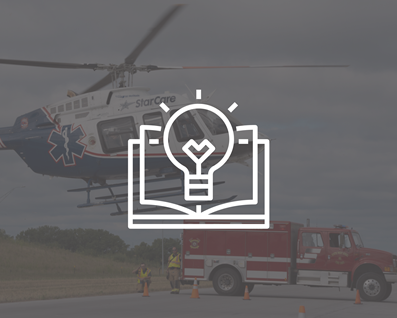
What is TIM & Why is it Important?
What is Traffic Incident Management (TIM)?
Traffic Incident Management (TIM) includes:
- Emergency responders, 911 dispatch, and traffic management center staff working together closely to make sure the right people show up to the scene.
- Towing and recovery professionals helping move vehicles out of the roadways or off the shoulder following an incident.
- Firefighters, EMS/EMT, law enforcement, safety patrols, traffic management centers, maintenance crews, and 911 dispatchers working together using well-rehearsed procedures to respond quickly and safely.
But these heroes of the highway can’t do it alone. They need your help!
TIM brings emergency professionals and the public together so that everyone is aware of traffic incidents and they can be cleared to get traffic back to normal as quickly and safely as possible. Effective TIM keeps traffic moving and improves the safety of motorists, crash victims, and emergency responders involved with or passing by the incident.


Why is it important?
For professionals who respond to highway incidents, the risk of injury or death is constant. According to the National Traffic Incident Management Coalition (NTIMC) traffic crashes and “struck-by” incidents continue to be a leading cause of on-duty injuries and deaths for law enforcement officers, firefighters, emergency medical services personnel, and towing and recovery professionals. Along with state Department of Transportation (Iowa DOT) and Department of Transportation (NDOT) professionals, these heroes of the highway risk their personal safety to provide necessary services to the citizens of the Omaha/Council Bluffs metro area. Safe and quick clearance of highway incidents reduces the exposure to harm and increases the safety for all.
How can you play a part in TIM?
- Slow down and move over when passing by an incident scene to provide a protective buffer for responders, as well as the motorists behind you. After all, it’s the law!
- Don’t “rubber-neck” at an incident – keep moving as to not create a traffic jam.
- Give your full attention to the task of driving. Avoid distractions like your phone, eating or drinking, and conversations with others while passing by an incident.
Help us share the message!
- Are you an emergency responder? Learn more about our training opportunities! The key to building stronger incident response teams is to train responders across all agencies together. Then, trained responders train their colleagues, expanding the reach of the TIM program across their region or State.
TIM Program Components
TIM Coalition Meetings by Request
TIM is a program designed to foster collaboration between emergency responders, including law enforcement, fire, EMS, emergency management, emergency communications, towing professionals, state, county, and city staff, and others to improve our response to traffic incidents. Conducting after-action reviews (AARs) fosters a culture of continued learning and improvement. AARs allow TIM stakeholders across all disciplines to identify best practices, opportunities for improvement, and actionable items to improve safe, quick clearance. Have you responded to a recent crash that would be beneficial to review with TIM stakeholders in your region, or do you have another topic that you'd like to discuss with your TIM coalition? Fill out the form below to request a meeting in your area.
TIM Coalition Meeting Request Form
Statewide Traffic Incident Management Goals
Increase responder, traveler, and construction worker safety
Improve the mobility of people and goods
Reduce congestion, fuel consumption, and emissions
Agency Contact Information
Bobbi Brooks
Highway Emergency Program Specialist
TIM Coordinator
Nebraska Department of Transportation
Office 402.479.3878



